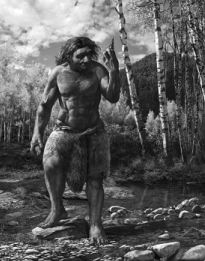'Dragon man' sheds light on evolution
Skull found in Harbin belongs to newly discovered species with same ancestor
By HOU LIQIANG in Beijing and ZHANG YU in Shijiazhuang | CHINA DAILY | Updated: 2021-06-28 08:55

The world has taken a critical step toward figuring out the origin and evolution of Homo sapiens, the species all living humans belong to, with Chinese researchers announcing the discovery of a new species of ancient human they have dubbed "dragon man".
More closely related to modern humans than Neanderthals, the species researchers officially named Homo longi sp nov may lead to a rethinking of human evolution.
The announcement was made based on the results of research on a skull that is at least 138,000 years old. It was reportedly unearthed in 1933 when a bridge was built over the Songhua River in Harbin, Heilongjiang province. The city was under Japanese occupation at the time, and the man who found the skull concealed it at the bottom of an abandoned well for safekeeping.
The fossil was not recovered until the third generation of the anonymous man's family learned of the secret before his death, according to studies the researchers published in the journal The Innovation on Friday.
The fossil was then donated in 2018 to the Geoscience Museum of Hebei GEO University in Shijiazhuang, capital of Hebei province.
The research team used sophisticated geochemical analysis, including rare earth elements, strontium isotopic ratios and X-ray fluorescence, and direct uranium series dating on the skull, according to a media release issued by the university on Saturday.
Because of its unsystematic recovery and long intervening time period, information about the exact fossil site and the fossil-bearing layer was lost.
"Although it is impossible to pin the skull to an exact location with currently available technology, all the evidence suggests that it was from a bed of lacustrine sediments aged between 138,000 and 309,000 years ago in the Harbin region," said Ge Junyi, one of the members of the research team and a geochemist from the Chinese Academy of Sciences.
Shao Qingfeng, another team member and a geochemist from Nanjing Normal University, said the team was very confident that the skull is more than 146,000 years old.
"The Harbin cranium is huge, showing either the largest or second-largest values for many measurements in our comparative fossil database, and its brain size, at 1,420 milliliters, matches that of modern humans," Chris Stringer, a paleoanthropologist from the Natural History Museum in London who was also a member of the team, said in the media release.
"It also shows other features resembling our species. It has flat and low cheekbones with a shallow canine fossa, and the face looks reduced and tucked under the braincase."
Comprehensive phylogenetic analysis by the team revealed that the Harbin skull and some other East Asian archaic human fossils belong to an evolutionary clade with the same last ancestor as Homo sapiens.
Stringer said it is widely believed that the Neanderthals formed a sister group of the Homo sapiens lineage. "But our analysis suggests that the Harbin cranium and some other Middle Pleistocene human fossils from China form a third East Asian lineage, which is actually closer to H. sapiens than the Neanderthals are," he said.
The excellent preservation of the Harbin skull throws new light on the evolution of the genus Homo, he added.
According to studies published by the team, the Harbin skull is undistorted and almost intact, with the main losses being all but one tooth, and slight damage to the left zygomatic arch.
Professor Ji Qiang, the team's lead researcher from Hebei GEO University, said the evolutionary model of humans is obviously different from that of other organisms. The number of human species became fewer and fewer, but the populations became larger and larger. As a result, only one human species lives on Earth today.
"The discovery of Homo longi sp nov has made a good start for us," Ji said. "I am looking forward to hunting for new human fossils, especially the common ancestor of Homo longi and Homo sapiens in East Asia, and even more in China, so as to promote international research on the origin of Homo sapiens."
If the common ancestor is found, it will raise the possibility that Asia is the origin of Homo sapiens, although further research would be needed to draw that conclusion.
"We have yet to find the common ancestor, so it's still too early to talk about it," Ji said.
























